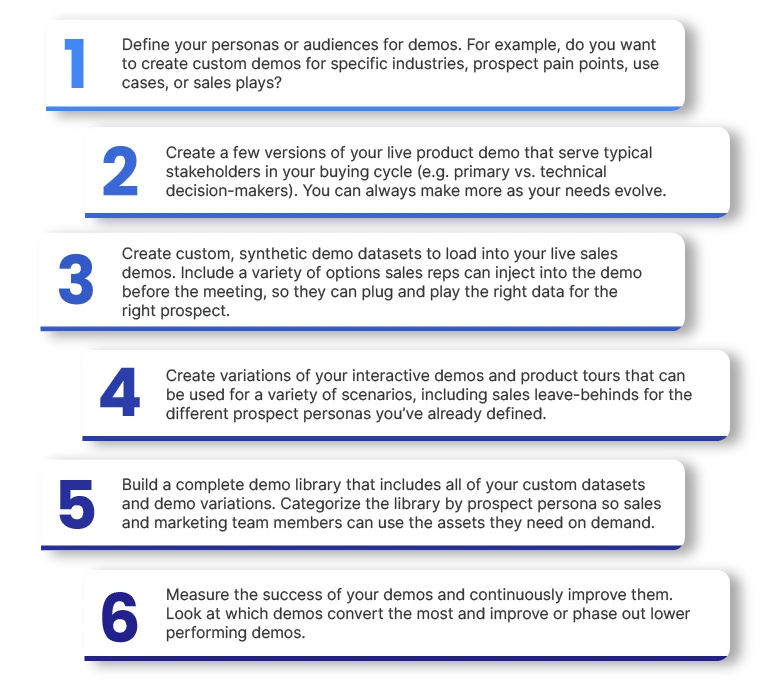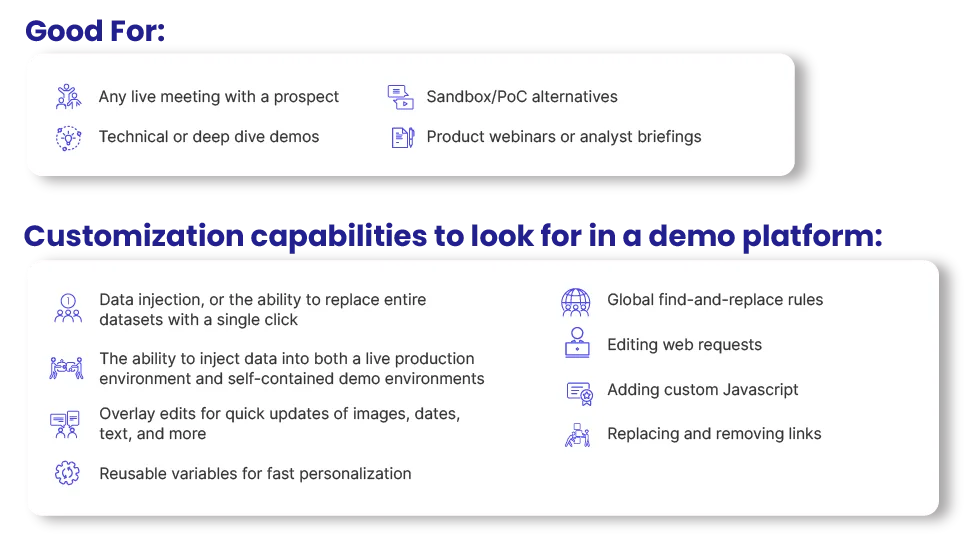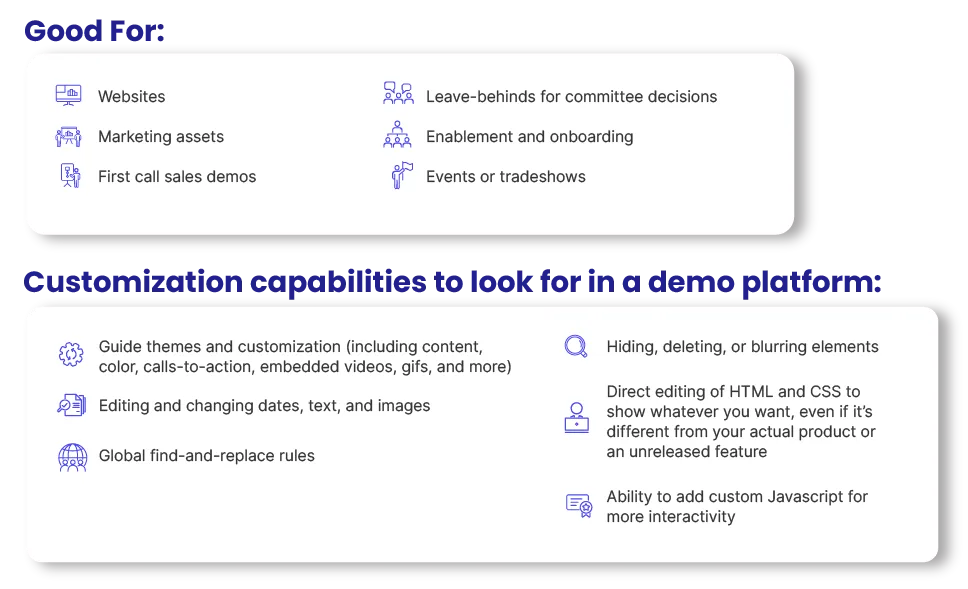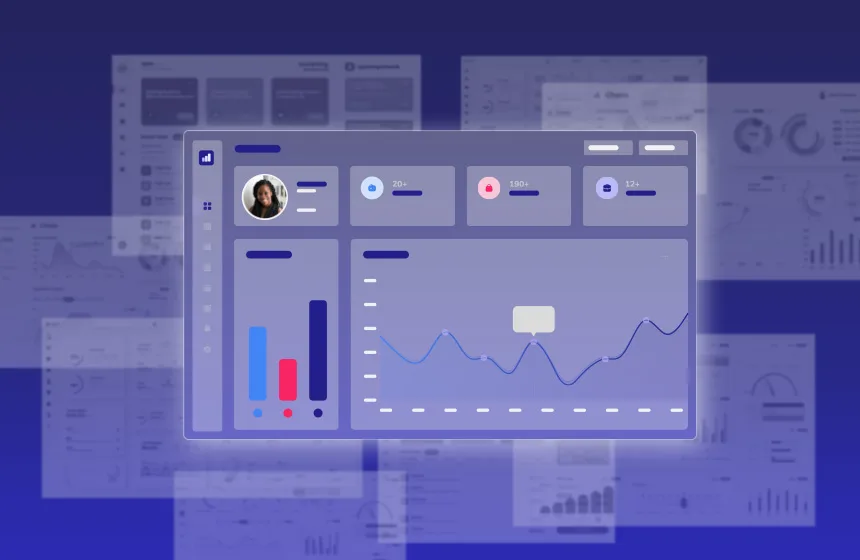Accelerate deals and increase win rates with the leading enterprise AI demo platform.
Are your demos truly customizable?

April 23, 2025
Table of Contents
Customization makes a powerful difference between losing six-figure prospects and building a demo program that wins deals. Here’s how.
Today’s B2B buyers are different.
|
They demand customization. 77% of B2B buyers will not make a purchase without personalized content. |
They’re shape-shifters. 71% of B2B buyers are millennials and Gen Z, who want to shift between personal and self-guided interactions. |
They’re committee decision-makers. The average B2B buying committee has expanded to 11 people. |
The way companies reach them has to change. Buyers are short on time. They’re demanding companies to prove product value faster, earlier, and constantly during the sales process. That’s where customizable, scalable demos can help:
✅ Get self-service buyers the information they need on demand
✅ Help buyers understand how a product works for their exact use case
✅ Navigate complex buying committees with different types of stakeholders.
In the previous model for creating customized demos, solutions engineers (SEs) would spend hours cleaning demo environments, creating custom datasets, and loading demo environments for each new prospect. In fact, 79% of SEs spend more than an hour a week cleaning and maintaining their demo environment, while 16% spend between 3-10 hours. On the high end, that’s a massive 21 days per year wasted for these valuable employees!
Here’s the good news. It doesn’t have to take an army of SEs to customize demos to the right prospect at the right time. A demo creation platform can help you create a scalable, repeatable program to deliver custom demos at every stage of the B2B buying process. (And make the most out of your existing presales resources…)
We’ll show you how.
According to Gartner, “Replacing or augmenting demos of production applications with more easily customizable self-service or live, interactive demos can reduce the time and resources needed to create, schedule and present demonstrations, decreasing costs and shortening sales cycles.”
Supercharging efficiency and customization with a demo program
Here’s a fact: Creating a scalable, repeatable demo program results in a 20% decrease in demos that require an SE. With a demo creation platform like Reprise, you can build, organize, measure, and improve all of the demos you use in your go-to-market motion.
A demo program can grow from where you are today, but it typically starts with a set of templated demos or datasets that can be used to customize your live and interactive demos for specific prospects. Having these assets ready can accelerate the sales cycle and spare SEs from having to build custom demos from scratch every time.
Here are a few tips on where to start:
How to customize live and interactive demos
Live sales demos
What they are:
For live sales demos, companies typically either use their live production environment or a self-contained demo environment. If their product is very stable, bugs aren’t ever an issue, and they want to always demo on the most up-to-date version — demoing on their live app might work.
For many SaaS products, though, that approach is too risky. The risks range from slow load times, outages, and connectivity issues to surprise changes and the potential to expose customer data. Any one of those going wrong can throw off a deal.
By contrast, a self-contained demo environment allows you to create a full-featured, interactive copy of your application that’s completely separate from your production environment. This is typically done by replicating the web requests and responses that make your product work. The application looks and feels exactly like your live app, but without the instability and other risks of a production environment.
Interactive, guided demos
What they are:
Interactive, guided demos are made by capturing your product’s frontend. By only capturing the frontend, you actually have a lot more customization options available than with a self-contained demo environment. You can do quick no-code edits in an easy-to-use interface. Or if you want more control, you can dive into the code itself and update the HTML, CSS, and Javascript.
There are also more use cases here, each of which benefit from greater customization options. You can add guides so prospects can navigate the product independently, either on your website or as a sales leave-behind. Or you can use it as an “on rails” demo for first calls or simple demos.
Three key customization success factors
Winning with modern B2B buyers takes a mix of customization and scale.
Find a comprehensive demo creation platform that lets you:
- Create both customized live sales demos and interactive, guided demos in a single platform
- Inject custom data into either a live production environment or self-contained demo environment
- Build demo programs made up of templates that can be tailored to meet each prospect’s needs
With these three success factors in mind, your sales and marketing team will gain the velocity to cater to shape-shifting prospects, discerning technical buyers, and extended buying committees with ease.
Want to speed up your sales cycle?
Read the Comprehensive Guide to Building a Demo Program









